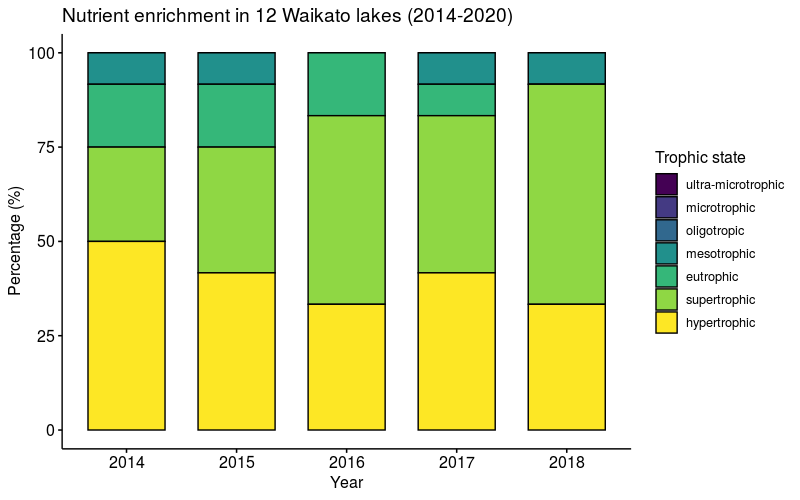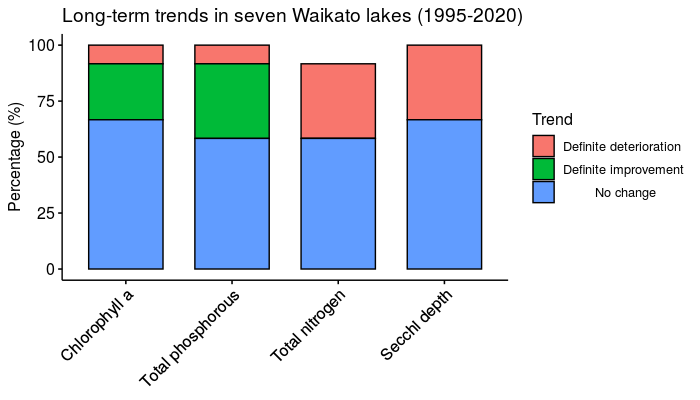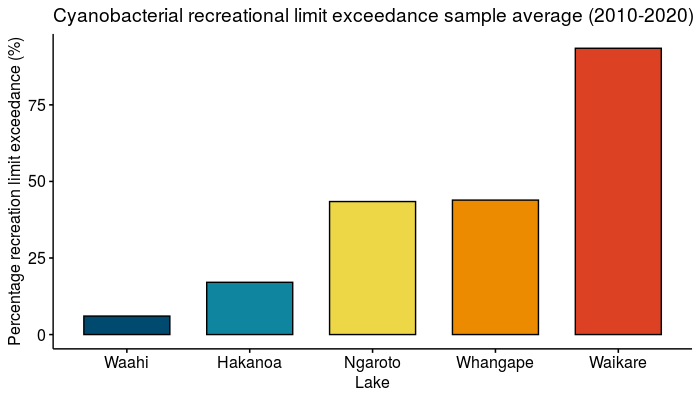Nutrient enrichment of shallow lakes
Why we monitor nutrient enrichment of shallow lakes
There are over 100 lakes in the Waikato region, which vary greatly in their physical, chemical and biological characteristics. The majority of the region’s lakes are shallow and less than 10 hectares in size.
Many of these shallow lakes are valuable conservation refuges for unique plant and animal species. They are valued for their unique genetic diversity, cultural and spiritual importance, scientific interest, recreational opportunities and intrinsic value.
This indicator focuses on nutrient enrichment (which influences trophic state) as a measure of water quality in shallow lakes. Monitoring nutrient enrichment in shallow lakes tells us about the ability of a lake to support native plant and animal life and identifies long-term trends in water quality. This information helps us develop management responses to avoid or reverse adverse affects on shallow lake water quality.
The indicator also tells us about the presence of potentially harmful blue-green algae in certain lakes.
What's happening?
Shallow lakes are defined as generally:
- having an average depth of less than three metres
- being able to support submerged aquatic plants over large areas of the lake bed
- not being stratified - their shallow depth means the lake’s water is stirred up regularly due to wind and wave action.
The Waikato region’s shallow lakes are generally nutrient enriched. They have high levels of nutrients such as phosphorus and nitrogen. The amount of nutrients entering a lake from its catchment mainly determines its trophic state. Nutrient enrichment results in poor water quality and a high trophic state.
Most of the 12 shallow lakes monitored are highly to extremely nutrient enriched (a trophic status of eutrophic, supertrophic or hypertrophic). They have high nutrient levels and poor water clarity. In contrast lakes with low-to-moderate nutrient levels and clear water are classed as oligotrophic or mesotrophic.
Increasing nutrient enrichment or ‘eutrophication’, results from run off and leaching of contaminants such as effluent, fertiliser and sediment from land use in a lake's catchment. Nutrients can also be recycled from the bottom sediments of shallow lakes, adding to the levels found in the overlying water. Farmland now surrounds most shallow lakes in the region.
How we monitor
Data and trends
The upper graph shows how many of a group of 12 shallow lakes are currently found in each nutrient enrichment category. For seven of these lakes there is enough information to measure any changes in water quality over time. The middle graph shows the proportion of the lakes that have improved (nutrient levels have decreased), have not changed or have deteriorated (nutrient levels have increased) in their level of nutrient enrichment. The bottom graph shows the proportion of samples collected from five lakes during 2010-2020 contained levels of potentially toxic cyanobacteria that exceed guideline values. Note that these five lakes are sampled because cyanobacteria blooms are known to have occurred in them in the past.
- The data were collected between 1995 and 2020.
- Find out more about our shallow lakes and where they are.
No changes in water quality were found in Lake Hakanoa and Lake Waahi between 2002 and 2020. Water quality in Lake Rotomanuka showed deterioration for Secchi depth and total nitrogen concentration. While total phosphorus concentrations in Lake Waikare improved between 1998 and 2020, total nitrogen and chlorophyll a concentrations showed deterioration. Lake Serpentine North showed deterioration for Secchi depth and total nitrogen concentrations but improvements in chlorophyll a concentrations.



More information
When this indicator is updated
This indicator is updated every two years.





To ask for help or report a problem, contact us
Tell us how we can improve the information on this page. (optional)